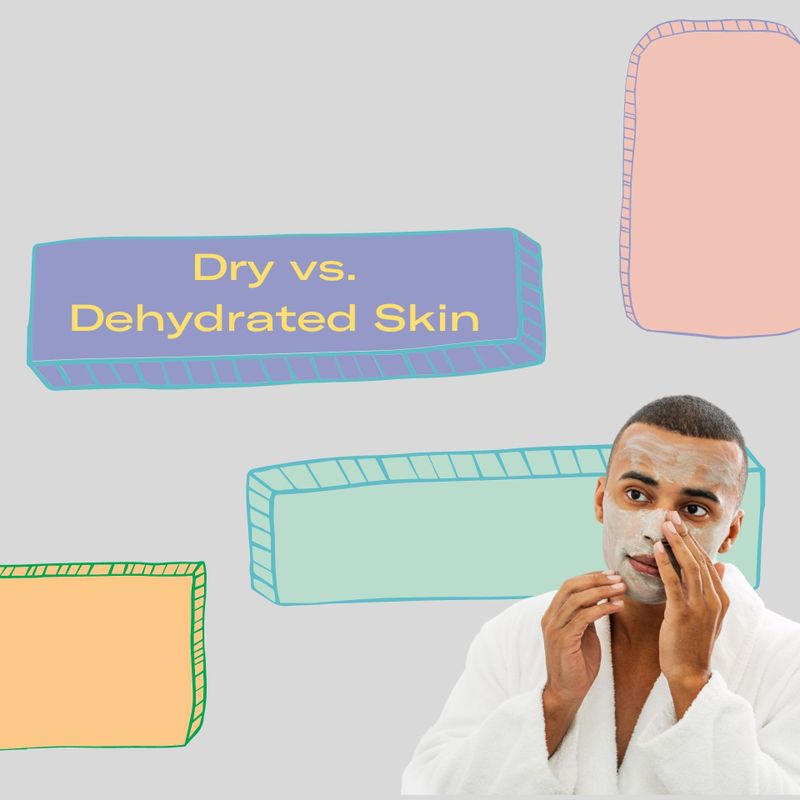If you thought dry and dehydrated were synonymous, you’re not alone. But knowing the difference may save your skin.
We can’t all have a plump and bouncy complexion all of the time. But knowing why your skin just doesn’t feel its best may be the first step to getting there. Most people think dry and dehydrated mean the same thing—just plain dry. But they are actually vastly different.
SEE ALSO: Everything you need to know about skin barrier function
Dry skin is a skin type – it may not ever be ‘fixable,’ but is always treatable, with moisturization. Dehydrated skin is a skin condition, meaning it’s more temporary because it’s related to your water intake and can be addressed by hydrating more frequently.
People often misuse the terms dry and dehydrated, according to aesthetician Chryzhelle Cinco. Very Good Light spoke to Chryzhelle about the signs, symptoms, and treatment of both conditions.
The difference between dry and dehydrated
“Dry skin is distinguished by fewer oil-producing glands in the skin and is a persisting condition, whereas dehydrated skin refers to the lack of water in the skin and can come and go based on the environmental factors at hand,” says Chryzhelle.
She also explains that it is not uncommon to have oily skin or combination skin but still feel dehydrated.
How can I tell if my skin is dry or dehydrated?
The Pinch Test
Chryzhelle explained one simple way to check the hydration status of your skin at home. Gently pinch your skin. If your skin lacks the ability to hold its shape, then you probably have dehydrated skin.
Dry skin, on the other hand, is often accompanied by flaking or itchy skin. A person with eczema, for instance, has true dry skin. Chryzhelle explains that it is also not uncommon to get drier skin as we get older.
What are the signs of dry skin?
Dry skin may have a rough, flaky, leathery appearance. Because this is a skin type, it may be something you’ve always dealt with, without even realizing it. Maybe you’re dry everywhere else on your body including hands, scalp, legs, etc. When you put on moisturizers and lotions, chances are they soak up fairly quickly. And you may also regularly experience regular flaking, cracking, sensitivity or issues like eczema.
How do you treat dry skin?
Unlike dehydration (which we’ll get to), it’s not as easy as cutting out a few bad habits. There may be no real ‘fix’. But you can always limit irritation caused by dry skin by paying extra attention to a few things in your skincare routine.
“Believe it or not exfoliating is extremely important for a person experiencing dry skin,” says Chryzhelle. “Exfoliating 1-3 times a week will help prevent a build-up of flaky, dead skin cells and allow for your products to penetrate deeper into the skin.”
She told me to imagine adding a moisturizer to skin with redundant cell build-up versus one that is more smooth and well exfoliated. Which one will allow for deeper penetration?
“Lactic acid is arguably one of the best chemical exfoliants for dry and sensitive skin,” she says. “Its molecular size is larger than glycolic acid, which makes it less irritating and it also has hydrating properties.”
Chryzhelle advises using a hydrating mask at least 1-2 times a week to provide your skin the nourishment that it needs. And to look for richer moisturizers that include ingredients such as squalene, ceramide, glycerin, and shea butter. For days that you are feeling extremely dry, consider using an occlusive barrier like Vaseline (which contains petroleum jelly) at night to maximize your barrier and prevent moisture from leaving the skin.
“It is also important to note to avoid harsh cleansers, over-exfoliating, products with fragrance, alcohol-based toners, and showering with hot water, as these can cause your skin to become more dry and induce irritation,” she says.
What are the signs of dehydrated skin?
“Dehydrated skin may also feel tight and dull, and fine lines and wrinkles may look more prominent,” Chryzhelle says. “Some people may notice that they have fine lines in places that they normally don’t, but this is not in fact due to collagen breakdown, but is a consequence of dehydrated skin.”
This is, in fact, good news. Hydration of the skin is very achievable, and usually can be corrected by making a few simple lifestyle changes, says Chryzhelle.
How do you treat dehydrated skin?
These include increasing your water intake, limiting caffeine intake, avoiding harsh cleansers, and reducing your water temperature when you shower from scorching hot to warm.
“The changing of the seasons can also exacerbate dehydration, Chryzhelle says. “For instance, the cold air and low humidity accompanied by winter can contribute to dehydration, so you may want to consider getting a humidifier.”
In terms of skincare products for dehydration, avoid witch hazel or alcohol-based toners. Hyaluronic acid, sodium PCA, glycerin, allantoin, and seaweed are also some key ingredients that draw water and retain them in your skin.
“Chronic sun exposure may also contribute to dehydration,” says Chryzhelle, “And what can help prevent this type of sun damage? Yup, you guessed it, SPF!”






